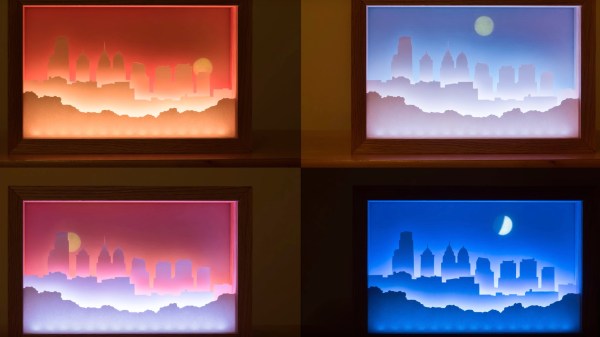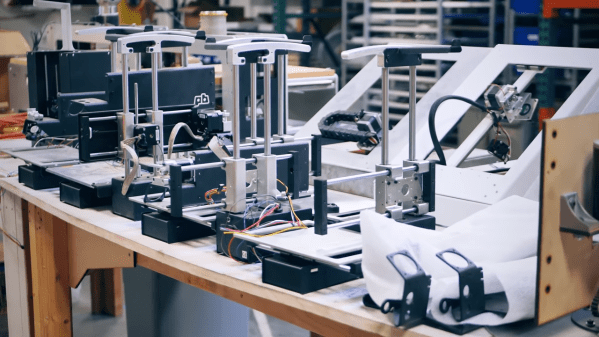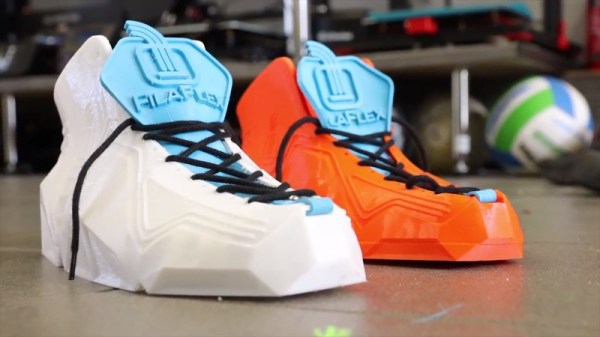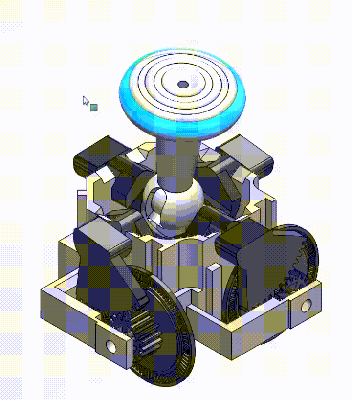Telling time by using the current position of the sun is nothing revolutionary — though it probably was quite the “life hack” back in ancient times, we can assume. On the other hand, showing time by using the current position of the sun is what inspired [Rich Nelson] to create the Day Cycle Clock, a color changing light box of the Philadelphia skyline, simulating a full day and night cycle in real time — servo-controlled sun and moon included.
At its core, the clock uses an Arduino with a real-time clock module, and the TimeLord library to determine the sunrise and sunset times, as well as the current moon phase, based on a given location. The sun and moon are displayed on a 1.44″ LCD which doubles as actual digital clock in case you need a more accurate time telling after all. [Rich] generally went out of his way with planning and attention to detail in this project, as you can see in the linked video, resulting in an impressively clean build surely worthy as gift to his brother. And if you want to build one for yourself, both the Arduino source code and all the mechanical parts are available on GitHub.
An interesting next iteration could be adding internet connectivity to get the current weather situation mixed into the light behavior — not that it would be the first time we’d see weather represented by light. And of course, simulating the northern lights is also always an option.
Continue reading “Decorative Light Box Lets You Guess The Time”


















